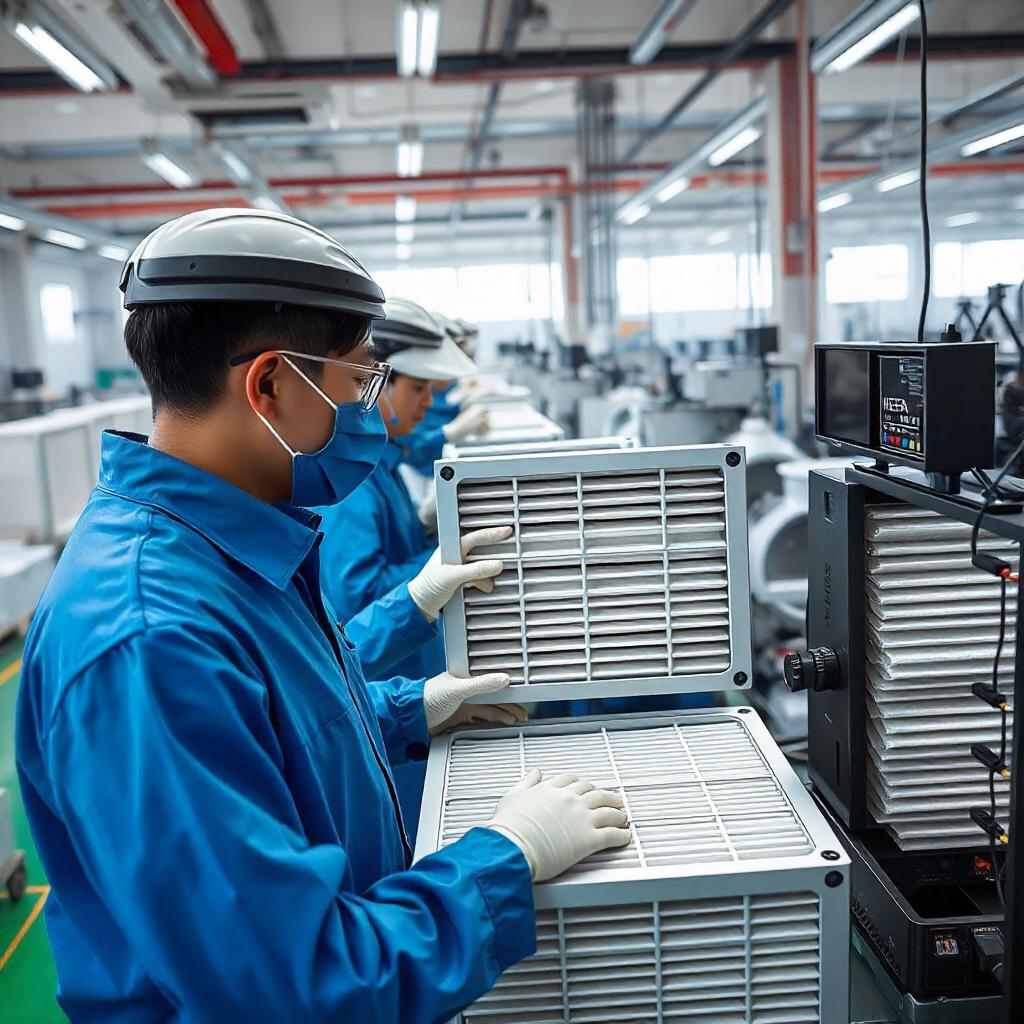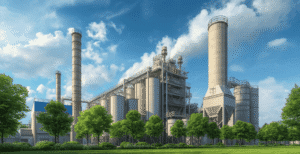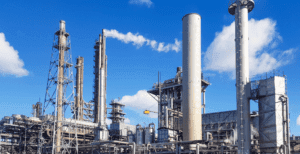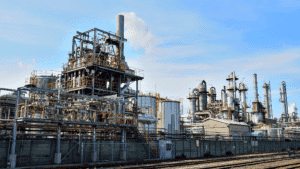What is Filter Efficiency?
Filter efficiency is the measure of a filter’s ability to remove particles from an air stream. It is expressed as a percentage. A higher efficiency means the filter does a better job of capturing contaminants.
- Filter efficiency shows how well a filter works.
- It is important for air quality and health.
- A higher percentage means fewer particles pass through.
- Filters with high efficiency are used in homes and industries.
- Good filter efficiency helps reduce dust, pollen, and other harmful particles.
Importance of Filter Efficiency in Air Filtration
Filter efficiency is very important for air filtration. High filter efficiency helps maintain good indoor air quality. It captures small particles like dust, allergens, and pathogens. This means that people breathe cleaner air, which is better for their health. Better air quality also protects HVAC systems. When filters work well, they prevent dust and dirt from building up in the system. This can save money on repairs and extend the life of the equipment. Additionally, using efficient filters helps meet health and safety standards. Many places require certain air quality levels. High-efficiency filters make it easier to follow these rules. Overall, filter efficiency is key to a healthy and safe indoor environment.
Measuring Filter Efficiency: Standards and Ratings
Measuring filter efficiency is important for understanding how well a filter works. Different standards help people compare filters. These standards show how much of certain particles a filter can remove from the air or water. Some common standards include HEPA, MERV, and ASHRAE.
HEPA stands for High-Efficiency Particulate Air. HEPA filters can trap at least 99.97% of particles that are 0.3 micrometers in size. This makes them very effective for cleaning the air in rooms, hospitals, and airplanes.
MERV stands for Minimum Efficiency Reporting Value. MERV rates filters from 1 to 16. A higher MERV rating means the filter can catch smaller particles. Filters with a MERV rating of 13 to 16 can remove particles like smoke and fine dust.
ASHRAE stands for American Society of Heating, Refrigerating and Air-Conditioning Engineers. ASHRAE ratings focus on how filters work in buildings. They measure how well filters remove different types of particles, including large dust and pollen.
Here is a table to compare these standards:
| Standard | Full Name | Particle Size | Efficiency |
| HEPA | High-Efficiency Particulate Air | 0.3 micrometers | At least 99.97% |
| MERV | Minimum Efficiency Reporting Value | 1 to 10 micrometers | 1 (low) to 16 (high) |
| ASHRAE | American Society of Heating, Refrigerating and Air-Conditioning Engineers | Varies | Varies by filter type and size |
These standards help people choose the right filter for their needs. Knowing the efficiency of a filter can help improve air quality and health.
Factors Influencing Filter Efficiency
Filter efficiency is important for how well a filter works. Several factors can influence filter efficiency. Here are some key factors that affect it:
- Particle Size: Smaller particles can pass through filters more easily. Filters are often designed for specific particle sizes.
- Flow Rate: The speed of liquid or air moving through the filter matters. A high flow rate can reduce efficiency, while a slower rate allows better filtration.
- Filter Material: The type of material used in the filter can change its effectiveness. Some materials trap particles better than others.
- Filter Thickness: Thicker filters can capture more particles, but they can also slow down the flow rate.
- Pressure Difference: The difference in pressure on either side of the filter affects how well it works. Higher pressure can improve efficiency.
- Temperature: The temperature of the fluid can change how particles behave. Higher temperatures may affect the filter’s ability to trap particles.
- Contaminant Type: Different contaminants may stick to filters in different ways. Some filters work better with specific types of contaminants.
These factors all play a role in how well a filter does its job. Understanding them helps in choosing the right filter for specific needs.
Enhancing Filter Efficiency: Best Practices
Enhancing filter efficiency means making filters work better. Here are some best practices to help improve filter efficiency.
- Clean filters regularly. Dust and dirt can block airflow and reduce efficiency.
- Check for leaks. Leaks can waste energy and make filters less effective.
- Use the right filter type. Different filters work better for different needs.
- Replace filters on time. Old filters can lose their ability to catch particles.
- Maintain proper airflow. Ensure there are no obstructions around the filter.
- Keep the system balanced. An unbalanced system can strain the filters.
- Monitor filter performance. Use pressure gauges to see how well filters are working.
- Educate users about filters. Knowledge can lead to better care and maintenance.
By following these tips, anyone can help enhance filter efficiency.
Case Study: Intensiv-Filter Himenviro’s High-Efficiency Filtration Solutions
Intensiv-Filter Himenviro is a global leader in industrial filtration solutions. The company is known for its commitment to sustainability. They use cutting-edge technology to create high-efficiency filtration systems. These systems provide tailored solutions for cleaner air. This helps businesses meet environmental regulations. Industries like manufacturing and energy benefit from their expertise. Intensiv-Filter Himenviro’s work impacts the environment positively by reducing harmful emissions. Their focus on innovation ensures that they stay ahead in the filtration market.
Common Misconceptions About Filter Efficiency
Many people have misunderstandings about filter efficiency. These myths can lead to confusion about how filters work. Here are some common misconceptions:
Myth 1: All Filters Work the Same Way
Some think all filters are identical. This is not true. Different filters work in different ways. For example, some filters remove dirt while others kill bacteria. Knowing the type of filter is important for understanding its efficiency.
Myth 2: A Higher Price Means Better Efficiency
Many believe that if a filter costs more, it must work better. This is not always correct. Price does not always reflect how well a filter performs. Some cheaper filters can be very effective, while some expensive ones may not be.
Myth 3: Filters Don’t Need to Be Changed
People often think filters can last forever. This is a big mistake. Filters need to be changed regularly to work well. If a filter gets too dirty, it cannot clean effectively. Regular maintenance is key for good filter efficiency.
Myth 4: Filters Remove All Contaminants
Some think filters can remove everything harmful. This is incorrect. Filters can only remove certain types of contaminants. They cannot get rid of all pollutants or chemicals. Understanding what a filter can and cannot do is vital for its effective use.
Myth 5: Bigger Filters Are Always Better
Many believe that a larger filter is more efficient. This is not always the case. While bigger filters can hold more dirt, they may not filter better. The design and type of filter matter more than its size.
Future Trends in Filter Efficiency and Filtration Technology
Future trends in filter efficiency and filtration technology focus on making filters better and more eco-friendly. These trends aim to improve how well filters work and reduce their impact on the environment.
| Trend | Description | Potential Impact on Filter Efficiency |
| Smart Filters | Smart filters use sensors and technology to monitor air or water quality. | They can adjust their operation for better performance and save energy. |
| Biodegradable Filters | These filters are made from materials that break down naturally. | They reduce waste in landfills and are better for the planet. |
| Nanotechnology | This technology uses very small particles to enhance filter performance. | It can lead to filters that capture smaller particles more effectively. |
| Energy-efficient Systems | These systems use less energy and operate more efficiently. | They can lower costs and reduce the carbon footprint of filtration processes. |
| Reusable Filters | These filters can be cleaned and used again. | They cut down on waste and are often more cost-effective over time. |
| Advanced Materials | New materials are being developed to improve filter lifespan and efficiency. | They can provide better filtration and last longer than traditional filters. |
These trends show that the future of filtration technology will focus on better performance and being kind to the environment.
Conclusion
Understanding filter efficiency is very important. It helps businesses maintain clean air and water. Key factors influence filter efficiency, such as the type of filter, how it is used, and the environment where it works. New technologies are coming up to improve filtration performance. These technologies aim to make filters work better and last longer.
Industry leaders like Intensiv-Filter Himenviro provide advanced and sustainable filtration solutions. They help companies follow environmental rules. Their products support different industries in getting clean air and water. By using these solutions, businesses can protect the environment and meet regulations.
Filter efficiency is crucial for all businesses. Companies should consider adopting innovative filtration technologies. This step can help them improve their operations and protect the planet.



